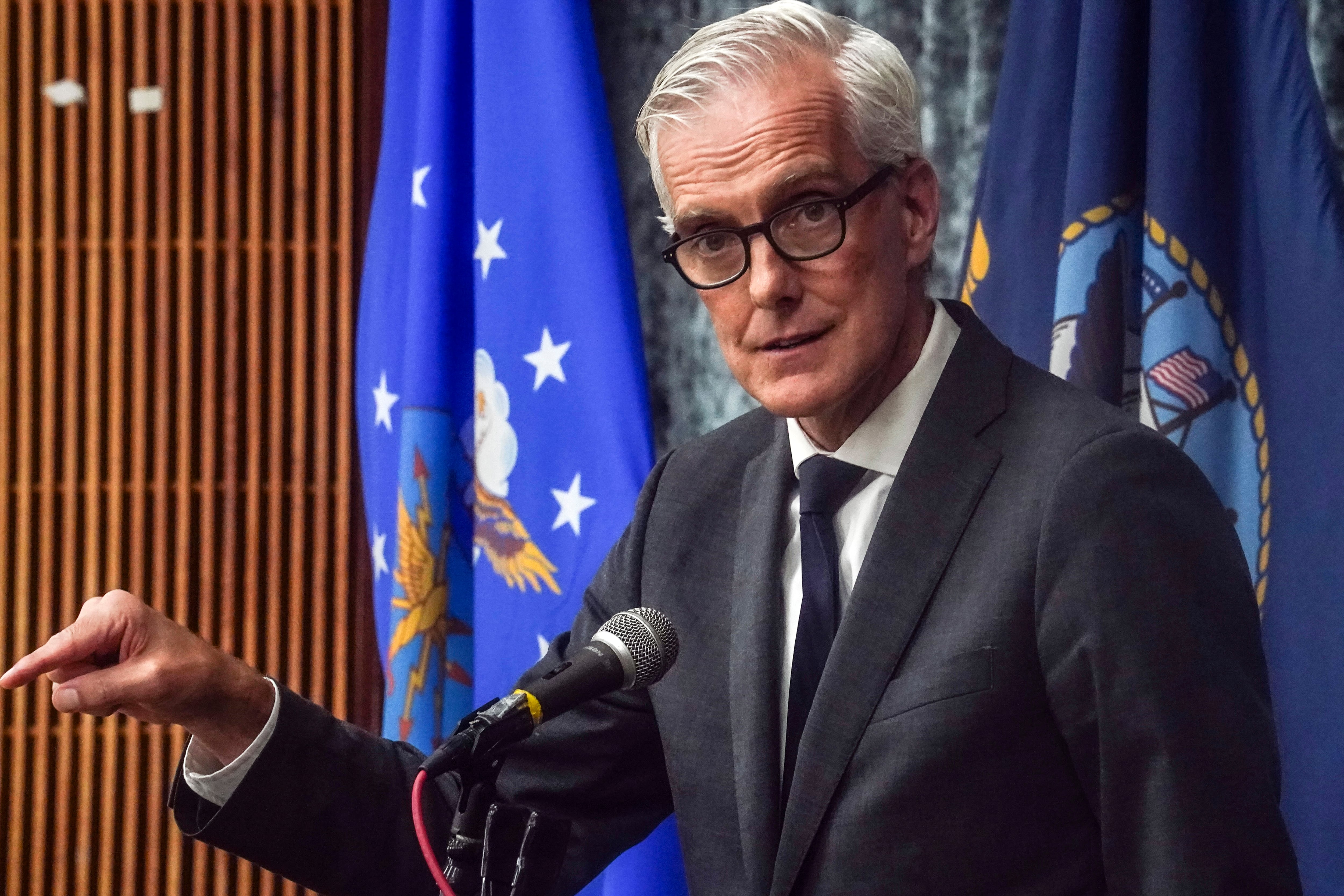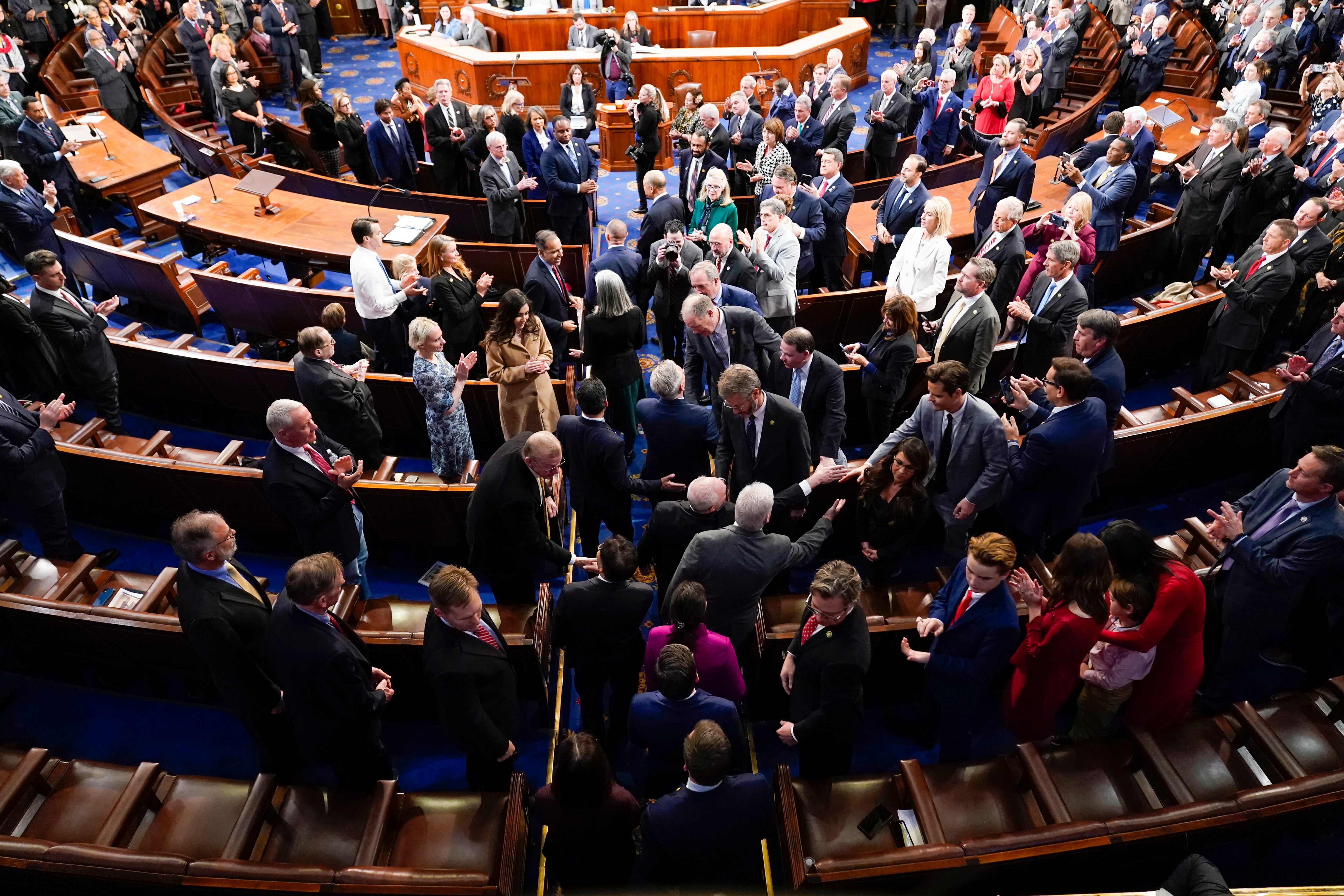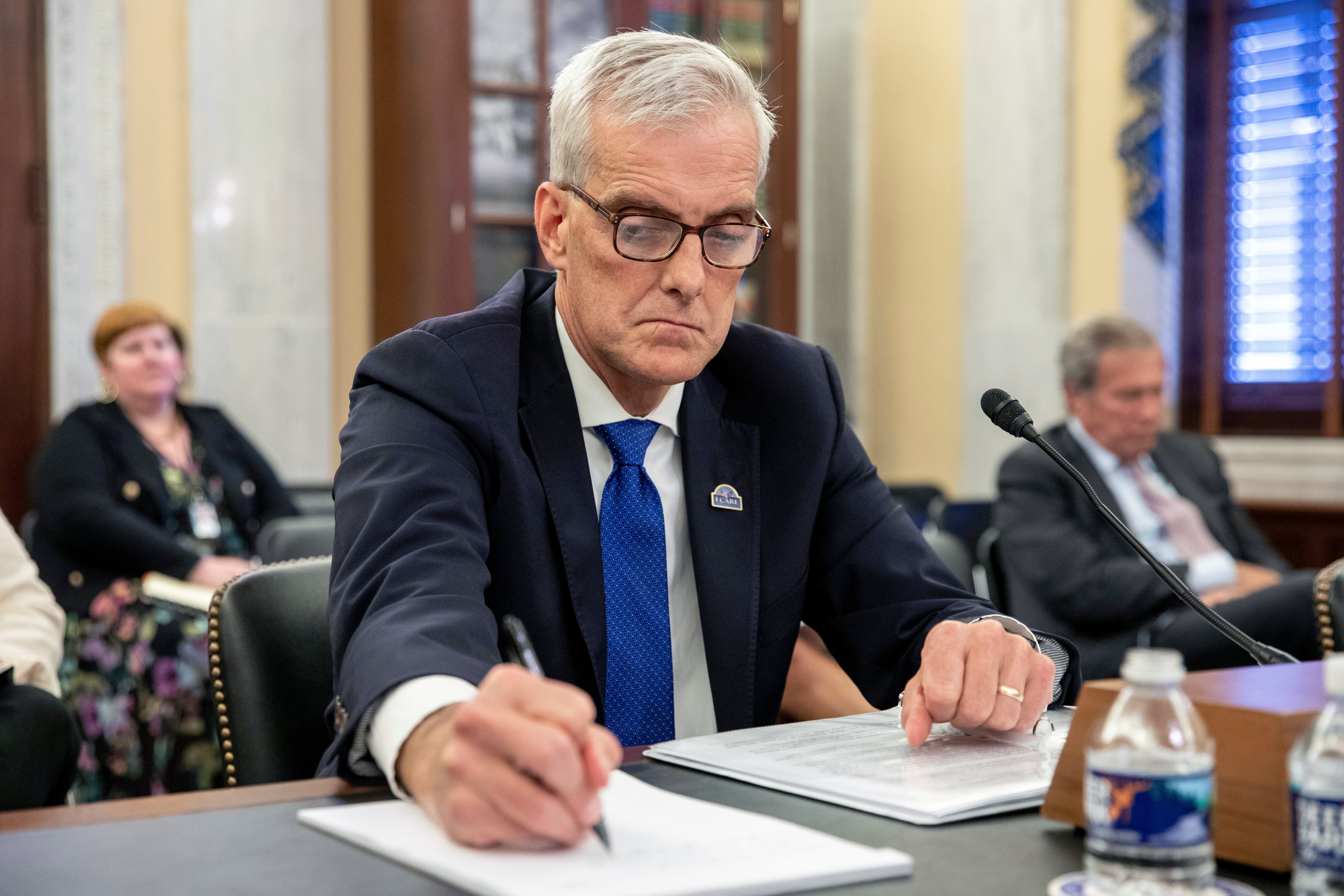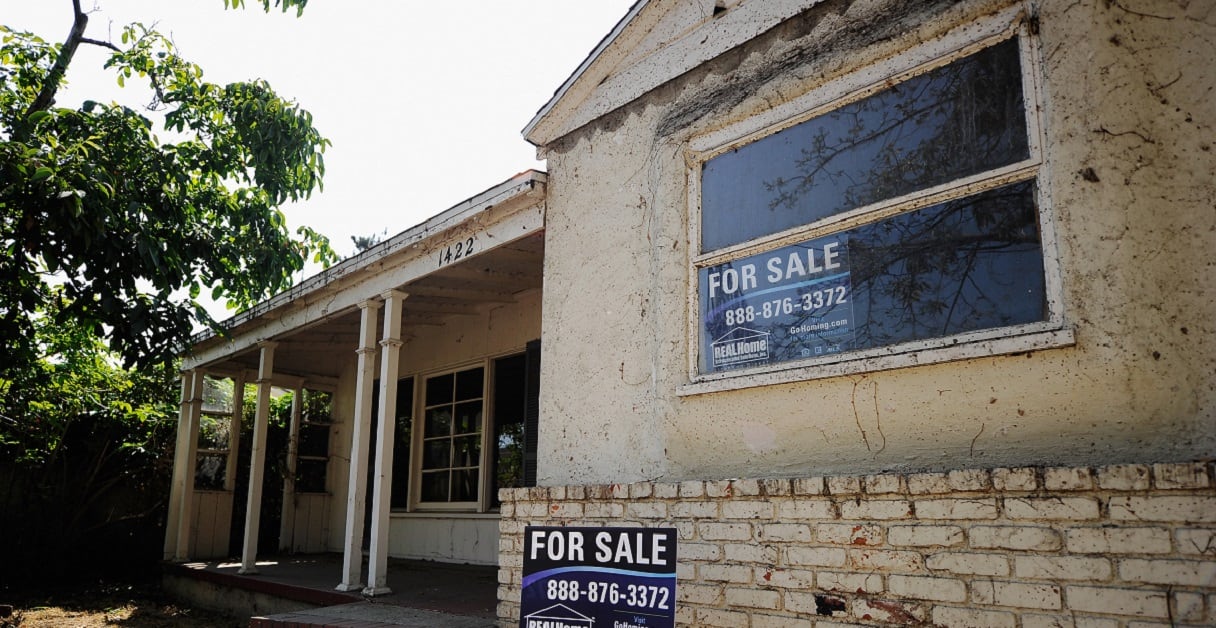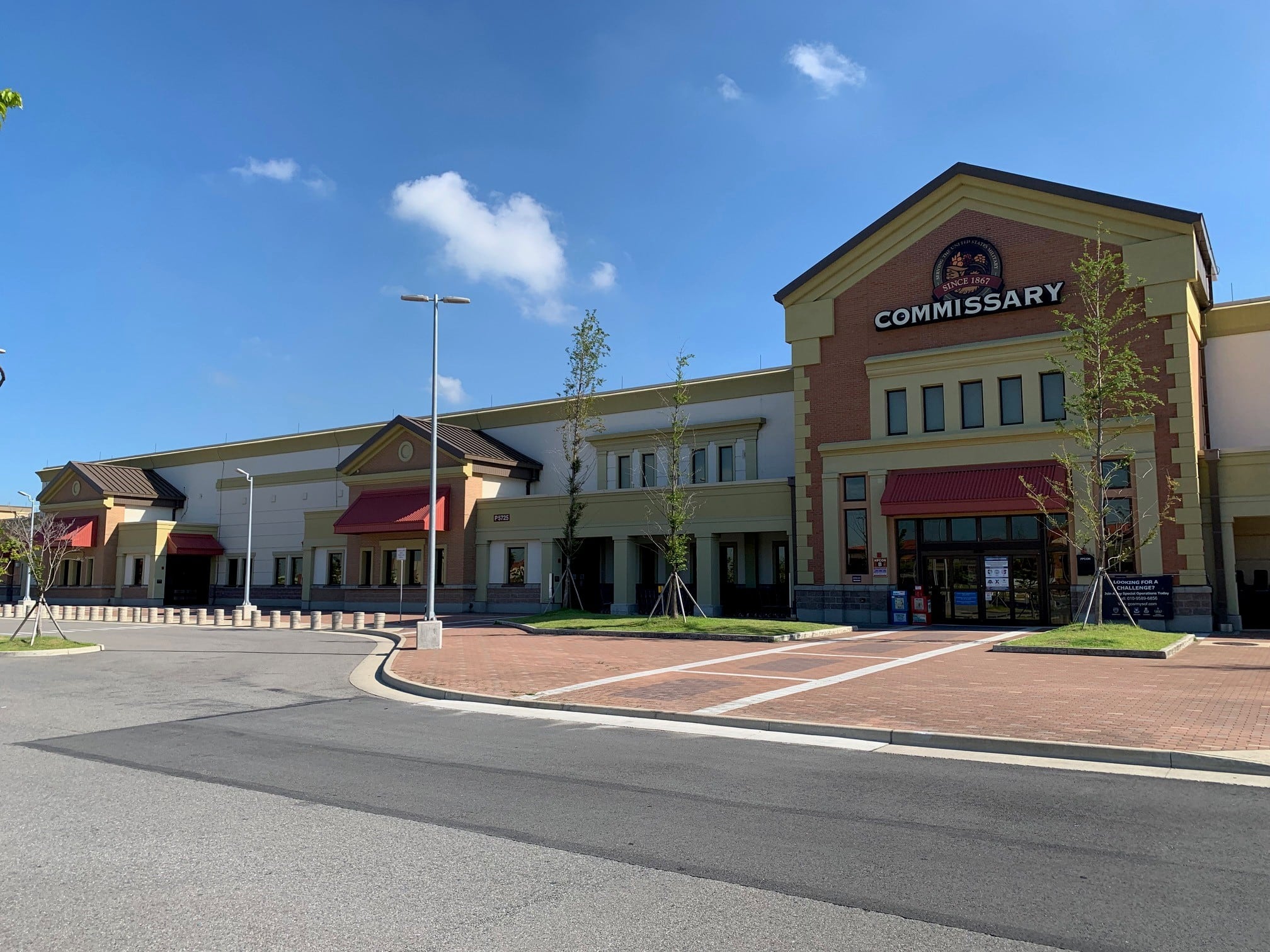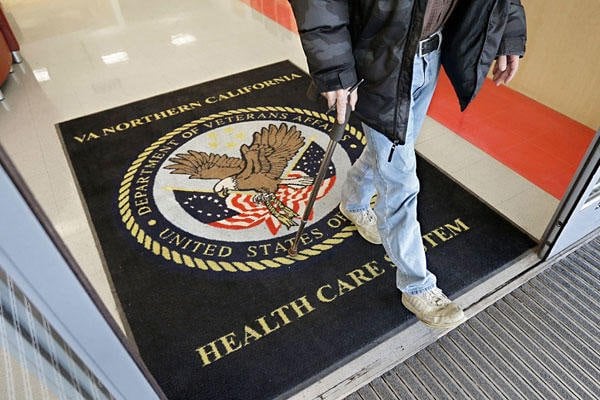Editor’s note: This story has been updated to include comments from the Marine Corps commandant at the same event, as well as a statement from Ingalls Shipbuilding.
WASHINGTON — The U.S. Navy says the rising cost of the San Antonio-class amphibious warship program is justifying the service’s decision to indefinitely pause the program.
Chief of Naval Operations Adm. Mike Gilday said Wednesday the production line at HII’s Ingalls Shipbuilding in Mississippi is running behind and the price tag is rising.
“The cost of that ship has gone from $1.47 billion, to the second ship at $1.5 [billion]. The third one that we’re contracting for right now is probably going to be between $1.9 and $2 billion — so that increase will be somewhere between 21[%] and 25%,” Gilday said, referring to Flight II ships LPDs 30, 31 and 32.
The Office of the Secretary of Defense a year ago directed the Navy to pause and study the amphibious transport dock, or LPD, to determine whether it wanted to continue with the existing Flight II design or move to a variant of that design.
The Navy requested funding for LPD-32 in its fiscal 2023 budget last spring and announced it would then truncate the program after three ships, despite previous plans for 13. Lawmakers, unhappy with that move, added advanced procurement funds for an LPD-33. The Marine Corps endorsed an LPD-33 in its unfunded requirements document last spring, but the Navy has said it does not want to buy it yet.
Speaking at the McAleese Defense Programs Conference, Gilday said that unless that future ship is purchased through a multiship contract, it “would likely be at $2 billion or above, at least a 25% increase. We’re moving in the wrong direction.”
However, the commandant of the Marine Corps disputed those numbers and said the LPD line has made cost improvements, once inflation is considered.
Gen. David Berger told reporters the Flight I San Antonio ship cost $2 billion. but the cost dropped down to $1.66 billion and then $1.62 billion a copy when the Navy and Ingalls transitioned to the pared-down Flight II design.
Asked about Gilday’s characterization of a spike in cost for LPD-32, which is still being negotiated, Berger told reporters Gilday “believes it might be up to that amount, I don’t know. But that’s not a contracted ship yet.”
The commandant said pausing the line, which is making cost-reduction improvements, and restarting it later would not make sense.
“They’re right at the point in the curve that’s the most efficient, and we’re going to take a timeout. From my perspective, I can’t accept that when the inventory, the capacity has to be no less than 31,” he said, referring to the 31 amphibious ships in the fleet today. That figure is set to drop to 24 this decade if the Navy continues decommissioning ships early without buying replacements.
Because San Antonio-class amphibs are built most efficiently when bought every other year, Gilday and Berger agree LPD-33 won’t come before FY25.
“We haven’t put the [FY]23 ship on contract yet, the line is already running behind, so as a taxpayer, if you want to give the vendor money next year for a ship that they can’t bend metal on?” Gilday said. “We have time here to take a look.”
“It goes back to the fact that we’re not going to be swimming in money forever,” he continued. “We’ve got to start making some hard decisions.”
Ingalls spokeswoman Kimberly Aguillard told Defense News following the conference that the actual shipbuilder cost — the cost that Ingalls controls, not including government-furnished equipment the Navy buys separately and delivers to the yard for installation — had held steady despite the pandemic, supply chain issues and other recent challenges.
“While Ingalls cannot comment on total price to the Navy, over the last five ships this partnership has enabled us to hold the line on shipbuilder cost. In 2016, LPD 28 was awarded for $1.47B (shipbuilder cost) and seven years later LPD 32 was negotiated with additional scope for $1.54B (shipbuilder cost), or within 5% of the LPD 28 award,” she said.
Noting the challenges the yard faced while building and delivering these recent ships, she added that “shipbuilders finished and tested LPD 28 at the height of the pandemic and delivered the ship last year, while LPD 29 goes to sea trials and will be delivered this year. The hallmark of this program has been the Navy-industry-supplier partnership that has continued to maximize the efficiency, affordability and predictability of this production line.”
During a Monday briefing on the Navy’s FY24 budget proposal, Under Secretary Erik Raven told reporters the Pentagon had initiated the pause in LPD buys, but an integrated team including the Navy, Marine Corps, the Office of the Secretary of Defense and the Cost Assessment and Program Evaluation office would choose the path forward.
Rear Adm. John Gumbleton, the deputy assistant secretary of the Navy for budget and director of the Navy’s fiscal management division, said during the same briefing “the services are fundamentally aligned on this requirement.”
“Both service chiefs like 31 as the requirement, both service chiefs like multiyear procurements, both service chiefs want to buy in a predictable future,” he continued. “If we can do a study and actually lower the cost of this, that’s all to the good of the Department of the Navy and Marine Corps.”
Defense officials are considering design changes that would lower the cost, with Capt. Judd Krier, the amphibious warfare branch head in the expeditionary warfare directorate, saying at a conference last month “we are doing a capabilities-based assessment in fiscal year ‘23, really looking at the requirements for what the future amphibious force needs for presence, deterrence and crisis response.”
Krier said this LPD review isn’t “necessarily just to design a ship, although that is certainly possible and a potential outcome,” but also to assess what the Navy needs for “the future amphibious force to maintain its lethality and survivability and sustainability in support of all the range of operations.”
However, Berger, who was part of the group nearly 10 years ago that pared down the Flight I design to create Flight II, was pessimistic about the effort.
“All that took us to the final Navy decision to go with the Flight II, all that made perfect sense,” he told Defense News. “There was a lot of headbutting on every little detail. So I don’t know, doing that again with the same ship, I don’t know what you’d find out that we don’t already know.”
Commander of Naval Sea Systems Command Vice Adm. Bill Galinis said at the same McAleese event he couldn’t discuss potential design changes, but his command is seeking to find cost savings in the manufacturing process.
“We’re always looking at ways to drive cost out of the shipyards, and the shipbuilders are a key part of that — in fact, they bring probably some of the better ideas because they’re building them,” he told Defense News Wednesday after his remarks.
Megan Eckstein is the naval warfare reporter at Defense News. She has covered military news since 2009, with a focus on U.S. Navy and Marine Corps operations, acquisition programs and budgets. She has reported from four geographic fleets and is happiest when she’s filing stories from a ship. Megan is a University of Maryland alumna.

